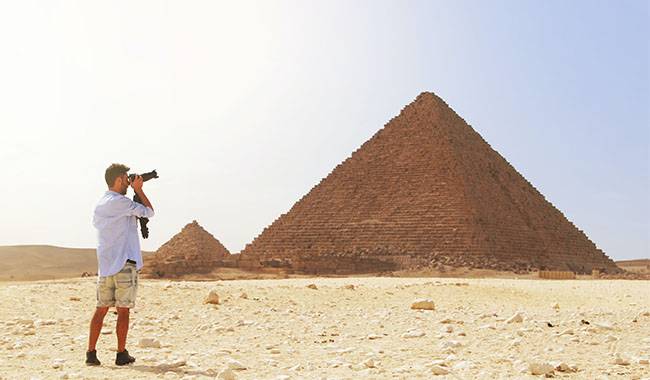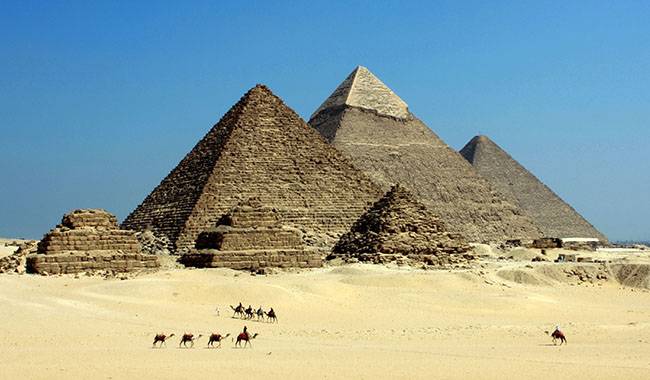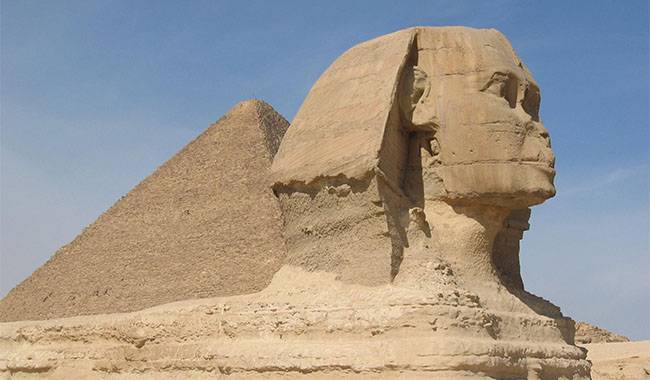
“Fotos” is an Egyptian business model. Whether you want to shoot privately, as a photographer, or as a blogger, there are necessary bribes and tourist traps to consider. For example, images of police officers are strictly prohibited. Many sites require a separate ticket with a camera. The guards make a good business out of the ban on photography and the bribes they get for it. This LCN Outdoors article will explain the 10 mistakes of taking photos in Egypt.
10 Photography Mistakes in Egypt!
1. Never take pictures of police, military or military installations!
Taking pictures of military installations, soldiers, and police officers is strictly forbidden in Egypt. Always be careful. At best, you may get away with a bribe. At worse, get fined, arrested, have your memory card deleted, or even lose your camera.
Please be careful not to take pictures of police officers in their normal lives. Maybe a cop or a soldier is a Street View accessory? Then don’t.
Some military installations are poorly marked. For example, the military barracks at the fishing port of Hurghada are only marked “Military” with spray paint on the road guardrails.
Karnak Temple in Luxor: Unlike the Valley of the Kings, you can take pictures here freely.
2. Taking pictures in the Valley of the Kings
Photographers need to buy a separate ticket in addition to the general admission. The price for three tombs is 300 Egyptian pounds (Arabic: الجنيه المصرى) about 15 Euros, with each additional tomb costing more. You can only pay in Egyptian pounds; the ticket office does not accept euros.
Flash photography is strictly forbidden in the tombs, even with a camera ticket! The ticket is also valid for only one camera. If you take two, you have to pay twice! The guards of the mausoleum control it all.
You have no chance to sneak into the Valley of the Kings with your camera. A metal detector and baggage check will take care of that before you enter the building.
When you enter the mausoleum, the guards check your camera ticket and the guards inside will do the same again. If they catch you without a camera ticket, you will of course have to pay bakshish.
Tip: Definition of bakshish. A relatively small amount of money given for a service (as a waiter) Synonyms: backsheesh, baksheesh, bakshis, gratuity, pourboire, tip. type: Christmas box. A gift is given at Christmas for services rendered during the year.
The guards check me on average twice per grave. Every guard does this. If he detects an unauthorized camera, he can charge a fee.
I see a lot of people taking pictures with their cell phones at the graves. Sometimes this goes well, sometimes not, depending on the grave and the mood of the guard. Some guards ask for a bribe for photos taken with a cell phone, others want you to delete the photos from your memory card.
In principle, money is always helpful in Egypt. For example, there is a tomb where the guard lets you go behind the barrier and climb into the sarcophagus of the pharaoh – for only 50 Egyptian pounds (about 2-3 euros)…
Always remember that the bribe is for one guard only. If the next guard comes, you’ll have to pay again if you’re unlucky.
On the organized guided tour from Hurghada to Luxor, you can leave your camera on the bus. Alternatively, you can give your camera to the guard at the entrance to the Valley of the Kings. I always see two drivers on the bus keeping an eye out for valuables.

3. Photography at the Egyptian Museum in Cairo
The only way to enter the museum with your camera is to buy an additional photographer’s ticket for 50 Egyptian pounds (about 2-3 euros). Including a tripod, the ticket costs 300 Egyptian pounds (about 15 euros) for non-commercial photography.
This ticket allows you to take pictures in the free access area of the museum. Photography is not allowed in the room with the sarcophagus and Tutankhamun’s mask. Sometimes the overburdened guards do not even allow you to take pictures with your smartphone.
Tutankhamun’s room is glazed. Photos of the outside can be taken from a rather unfortunate angle with a polarizing filter.
A separate ticket of 300 Egyptian pounds (about 15 euros) is required to visit the mummy room. Your camera ticket is not valid inside the room. Security also prevents any photos taken with a smartphone.
In the early morning hours, the Cairo highway heads towards the Great Pyramids of Giza.
4. Photography at the Pyramids of Giza
You can take pictures freely inside the pyramids. If you want to take pictures inside the pyramids, you have to pay 300 Egyptian pounds (about 15 euros).
All photography is strictly forbidden in the chambers of the Pyramids of Khufu. Bribing the guards won’t help, as there is a camera hanging from the ceiling.
5. Photography in Abu Simbel
Photography is allowed on the outside of the temple. Inside the temple, even taking pictures with smartphones is prohibited. There is no ticket for photography at the Abu Simbel temple yet.
The guards inside the temple are very careful to enforce the ban on photography. They do this for self-interest reasons as well: if they catch you with a camera or smartphone in your hand, you will at least pay a fee.
If you are unlucky, they will take the camera away, ask you to remove the memory card or call their superiors.
6. Street photography in Egypt
In beach resorts, people’s photos are not a big deal. Most of them smile for the camera. Some people ask to pay for the photos.
50 Egyptian pounds (about 2-3 euros) – that’s how much Bedouins charge for a photo with a camel. In villages and places away from tourist attractions, be sure to ask if you can take pictures of people.
There are always Bedouins with their animals in the rest areas along with the tour buses. Sometimes they get creative and bring donkeys and put baby goats on them to fit the slogan “Musicians of Bremen City”. Of course, you are only allowed to take pictures for tips.
A small street of 165 feet (50 meters) next to the exit of the Great Pyramid in Cairo…
7. Shooting in the temples and “secret tips”
Temple guards were by far one of the highest-paid workers in Egypt.
They took travelers with cameras to fairly secluded areas of the temples as a sporting pastime. Perhaps the temple contained a niche with beautifully colored hieroglyphics? Or an exceptionally well-preserved room?
Of course, obliging guards will take you there and demand a bribe in return. Some may well charge 10 euros for this.
At the Temple of Hatshepsut and the Valley of the Kings, the drivers of small tourist trains like to invite travelers with cameras in their hands to sit in front. With the motto: “You can take exceptionally good pictures here.” Of course, they want money to do this.
8. Typical posed photos and Instagram patterns
The Bedouins of Gigi certainly look at the Instagram classics every day. They know every angle and every theme that’s appropriate to hear. No kidding. At the Pyramids, they sell their own camel photography rides to take photos like the one above.
The tour guides already know all the typical painting patterns by heart. Unfortunately, some of the cloth vendors near the sites or rest stops are annoying. They start wrapping scarves around their heads for photos without asking. Of course, they want to sell their fabrics at a higher price.
I noticed this every few minutes in the pyramids.

9. scratches on lenses and sand in lenses
Pay special attention to your lenses when traveling in the desert and on windy days. In the desert, sand can easily get inside. This also applies to areas around the pyramids and in the Valley of the Kings. Zoom optics are especially prone to this.
Sand on your lens can also scratch your camera lens. The best thing to do is to remove the sand with an airbox or try to blow it away. I always put a filter on my camera lenses to protect them from this kind of damage.
Also, be sure to change the lens so that the wind in the background is facing you. This reduces the risk of sand hitting the camera. During desert expeditions with quadcopters, and on windy days, a wind and rain cover can be a good way to keep sand out of your camera.
After visiting the pyramids at Giza, I was still bothered by sand on my zoom lens, despite all the precautions taken.
10. Tourist traps in photography
Did you bribe a guard to take a picture? He takes you to a cordoned-off area of the temple complex, you start taking pictures, and another guard shows up. Of course, he’s not happy at all and tries to take your camera, take the memory card or threaten to call the police.
Egypt travel guides warn that some guards put off all business to stage mock executions. Of course, you have to pay much more than the 50 Egyptian pounds (about 2-3 euros) you give the first guard. I have not seen it myself.
Conclusion on Egyptian photography
Be sure to ask if you need a separate ticket to take photos at the site. Unfortunately, the Egyptian authorities are imposing such bans or fines with cameras on an increasing number of sites.
Do not take pictures of soldiers, police, or military installations!
With the help of Baksh, you can sometimes get unexpectedly good shots at forbidden places. The Egyptian guide commented. “That’s how things are in Egypt. You pay for every little thing.
Have you ever had to take your own photos in Egypt? Did it go well, or did you ever have to ‘tip’ a guard? Of course, I’m always interested in your own advice.
Write to me about your experience in the comments below.